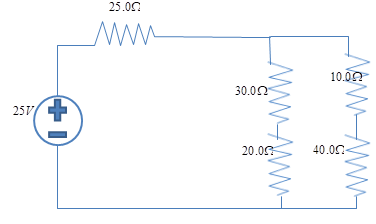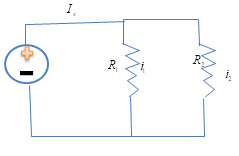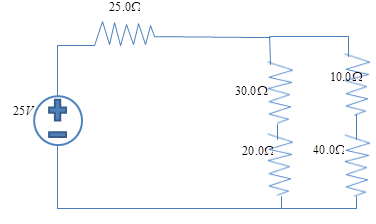Question
Question: Using ohm's law, find the current through 25.0 ohm. A. 1.0A B. 1.5A C. 0.5A D. 2A...
Using ohm's law, find the current through 25.0 ohm.
A. 1.0A
B. 1.5A
C. 0.5A
D. 2A
Solution
Hint: This question is based on the ohm's law, and the current division rule which is used to make the calculation easier. We will discuss both to get the answer. We will proceed by finding the source current first and then using the current division rule we will find the current through other elements of the circuit.
Complete step-by-step answer:

Ohm’s law states that the voltage or potential difference between two points is directly proportional to the current or electricity passing through the resistance, and directly proportional to the resistance of the circuit. The formula for Ohm’s law is V=IR. This relationship between current, voltage and relationship was discovered by German scientist Georg Simon Ohm.
Also , whenever current has to be divided among resistors in parallel, use current divider rule

i1=R1+R2R2is i2=R1+R2R1is

Now the total resistance of the given circuit is
Req=25+10050×50=50
Therefore, the current from the source end is given by
Is=ReqVs Is=2525=1A
As we have to find the current through the 25 ohm resistor, we know that the current in series remains the same and therefore the same source current will flow through the 25 ohm resistor.
Therefore the same source current will flow through the 25 ohm resistor.
Hence, the correct option is “A”.
Note- This law cannot be applied to unilateral networks. A unilateral network has unilateral elements like, diode, transistor, etc. Ohm's law is also not applicable for non - linear elements. Also the ohm’s law is only applicable to linear elements. An element is said to be linear if it satisfies the principle of homogeneity and superposition.
